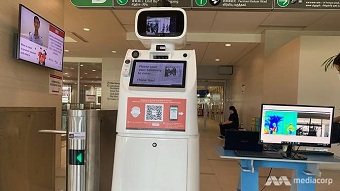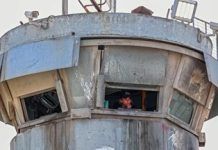A new approach to hospital management will see the National University Health System (NUHS) make use of drones, robots and touch-free technology on its various campuses.
NUHS chief operating officer, Ng Kian Swan, said that these new types of technology would serve to further improve operations.
“Hospitals are important assets, and there’s this continuing need to make it safer, smarter and of course, greener,” he said. “By leveraging on technology and IoT (Internet of Things) and AI (Artificial Intelligence) it helps us to drive efficiency, productivity, safety, and most importantly, it also provides a platform for us to upskill our fellow colleagues … it is actually preparing a future-ready workforce, to support the workforce in operations.”
NUHS comprises healthcare institutions such as Alexandra Hospital, Ng Teng Fong General Hospital, Jurong Community Hospital and National University Hospital (NUH). One way in which NUHS plans to leverage technology to bolster operations is through the use of drones, said Mr Ng. “For drones, it replaces the conventional way of putting up gondolas, scaffolding, to do building inspection(s). It is expensive, time consuming and to a certain extent, not so accurate,” he said.
“By using drones, you can reach out to any part of the building, take photos and (it) gets transmitted to the engineers, and if there are problems to fix immediately, we can do it.”
The use of drones to conduct building inspections has been rolled out since October last year, with Alexandra Hospital, Ng Teng Fong General Hospital and NUH having gone through two rounds of inspections. These checks will be done quarterly.
This will mean more frequent and regular inspections to ensure the upkeep of the hospitals’ facade and reduce the risk of issues such as cracks, stain marks and falling objects from roof gutters and louvres, added NUHS in a media release. NUHS will also pilot the use of drones to conduct security surveillance and patrol various hospital premises, monitoring areas with “critical facilities” such as power plants and water tanks, said Mr Ng. This has been rolled out at all three hospitals as well.








